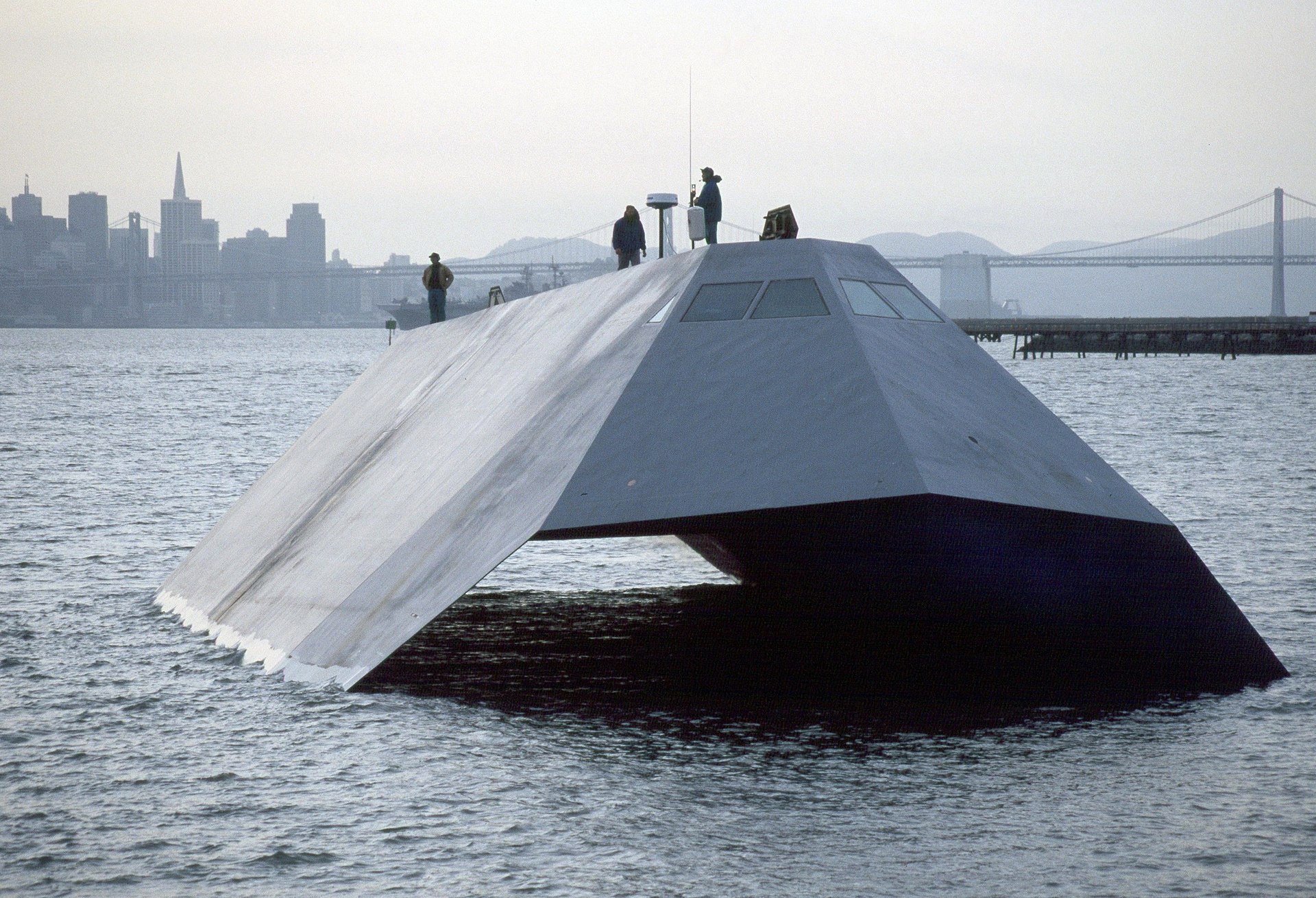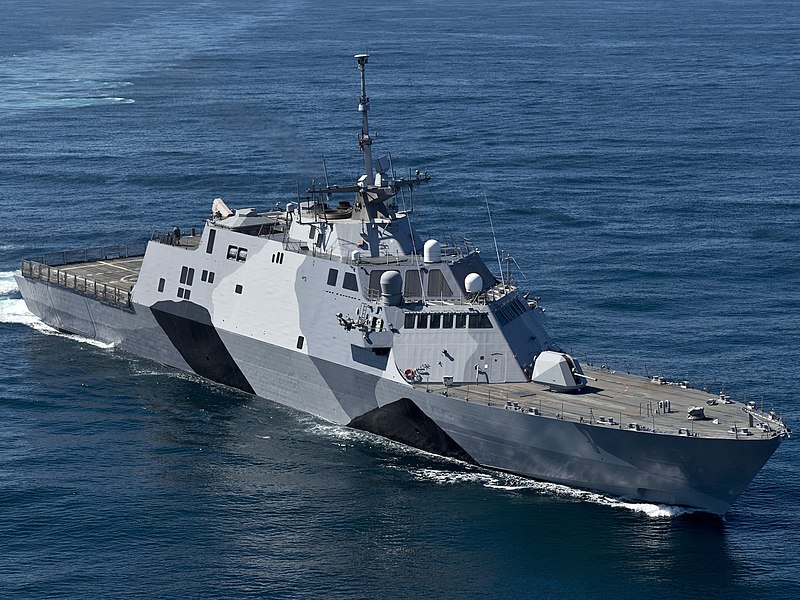FordGT90Concept
"I go fast!1!11!1!"
- Joined
- Oct 13, 2008
- Messages
- 26,263 (4.30/day)
- Location
- IA, USA
| System Name | BY-2021 |
|---|---|
| Processor | AMD Ryzen 7 5800X (65w eco profile) |
| Motherboard | MSI B550 Gaming Plus |
| Cooling | Scythe Mugen (rev 5) |
| Memory | 2 x Kingston HyperX DDR4-3200 32 GiB |
| Video Card(s) | AMD Radeon RX 7900 XT |
| Storage | Samsung 980 Pro, Seagate Exos X20 TB 7200 RPM |
| Display(s) | Nixeus NX-EDG274K (3840x2160@144 DP) + Samsung SyncMaster 906BW (1440x900@60 HDMI-DVI) |
| Case | Coolermaster HAF 932 w/ USB 3.0 5.25" bay + USB 3.2 (A+C) 3.5" bay |
| Audio Device(s) | Realtek ALC1150, Micca OriGen+ |
| Power Supply | Enermax Platimax 850w |
| Mouse | Nixeus REVEL-X |
| Keyboard | Tesoro Excalibur |
| Software | Windows 10 Home 64-bit |
| Benchmark Scores | Faster than the tortoise; slower than the hare. |
Sea Shadow, 1985.

USS Freedom, 2008.

Zumwalt was put behind because the US Navy was hoping LASER and rail gun technologies would keep up (program started in 1994). They eventually decided they couldn't wait anymore but the ship's turbines and electrical systems are designed to take the electrical load of next generation weapon systems.
b) It has a large deck for take off and retrieval of helicopters and a hangar to hide them away so they don't break the stealthy profile.
c) It has a massive compliment of missile launchers for reaching out even further than the rail guns can reach.
d) The RADAR cross-section of that 600 foot long ship isn't much larger than a fishing boat. Most radio waves that hit it are reflected into space.
e) It's as quiet to sonar as the USS Los Angeles, torpedos will have trouble finding it and sonar will have difficulty tracking it.
f) It is designed to have a very low infrared radiation signature as well making it very difficult for heat seeking missiles to target it.
g) It's RADAR and sonar systems are the best in the world with a supercomputer backing them up.
All combined, it's not only nearly invisible to everything except the naked eye (to which it is deceptive due to the tumblehome hull), it can see and engage targets before they're even aware it exists. Excepting the aircraft carriers, it is the most deadly ship prowling the oceans.

USS Freedom, 2008.

You forgot huge. It's 600 feet long. Visby is 239 feet and USS Freedom is 378 ft. Zumwalt is 80.7 ft wide compared to Freedom's 57.4 ft. FYI, despite USS Freedom being a lot bigger than Visby, it's also much faster at 47 knots versus 35 because Freedom is a semi-planing ship. Visby would not want to encounter an unfriendly Freedom-class, nevermind Zumwalt-class.Except that Zumwalt is far more advanced, and, well, stealthy. Ah yes, one is corvette, second one is destroyer close in size to the first dreadnoughts.
Also Burke's are using stealth tech too (and buuuuuuunch of other ships from various countries).
Zumwalt was put behind because the US Navy was hoping LASER and rail gun technologies would keep up (program started in 1994). They eventually decided they couldn't wait anymore but the ship's turbines and electrical systems are designed to take the electrical load of next generation weapon systems.
a) Rail guns can shell, at very low cost, targets 100+ miles away.It's an interesting piece of engineering, but sadly it is strategically and tactically utterly pointless.
b) It has a large deck for take off and retrieval of helicopters and a hangar to hide them away so they don't break the stealthy profile.
c) It has a massive compliment of missile launchers for reaching out even further than the rail guns can reach.
d) The RADAR cross-section of that 600 foot long ship isn't much larger than a fishing boat. Most radio waves that hit it are reflected into space.
e) It's as quiet to sonar as the USS Los Angeles, torpedos will have trouble finding it and sonar will have difficulty tracking it.
f) It is designed to have a very low infrared radiation signature as well making it very difficult for heat seeking missiles to target it.
g) It's RADAR and sonar systems are the best in the world with a supercomputer backing them up.
All combined, it's not only nearly invisible to everything except the naked eye (to which it is deceptive due to the tumblehome hull), it can see and engage targets before they're even aware it exists. Excepting the aircraft carriers, it is the most deadly ship prowling the oceans.
Last edited:




 .
.



 Zumwalt channels that to firepower where Freedom channels it to speed.
Zumwalt channels that to firepower where Freedom channels it to speed.


 and their stealthy "secret" stuff
and their stealthy "secret" stuff